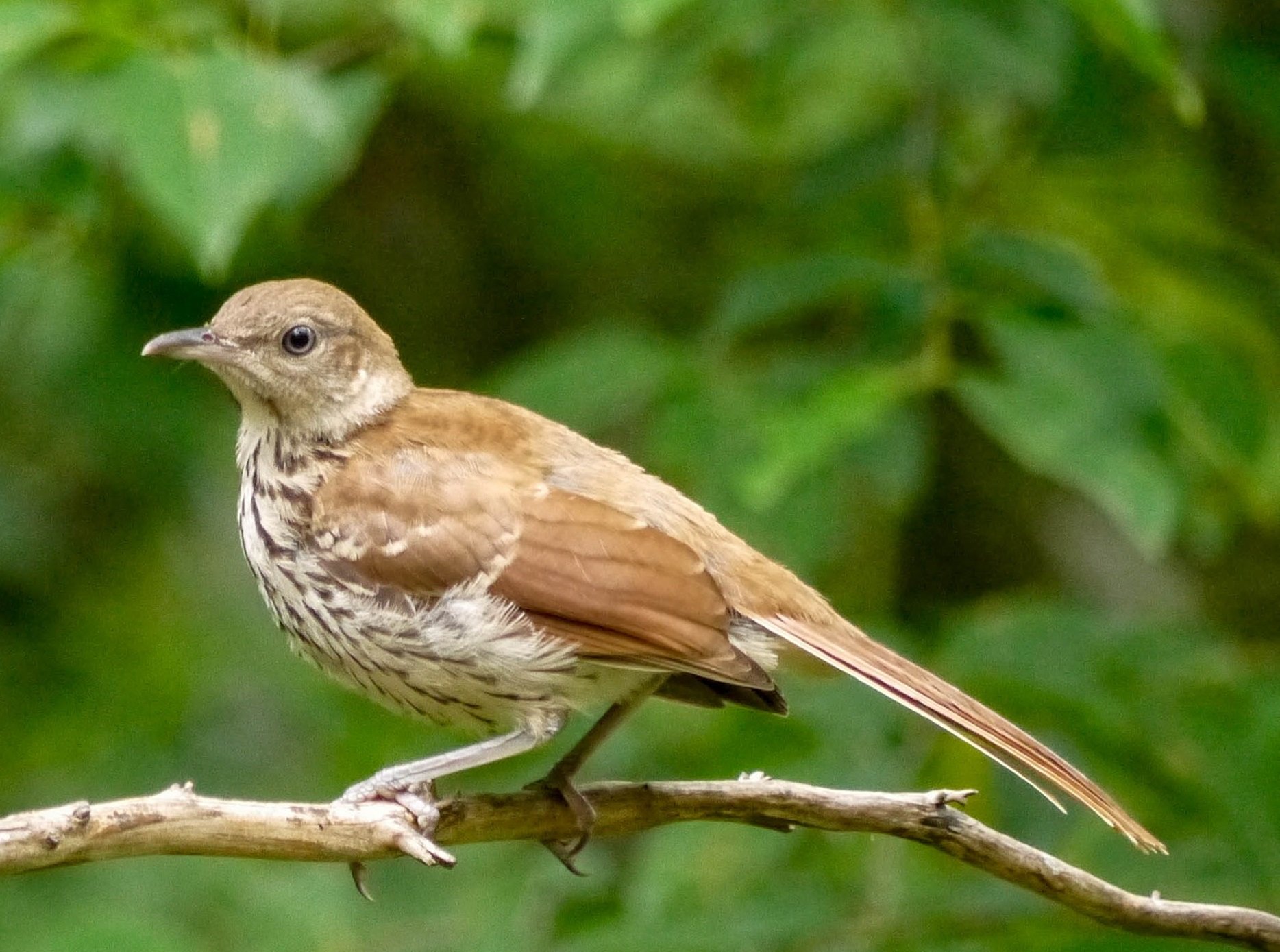
Brown Thrashers, large, rust-colored songbirds, were so popular in Georgia that they became the namesake of their NHL hockey team, the “Atlanta Thrashers!” It comes as no surprise then that the governor proclaimed the Brown Thrasher the state bird in 1953, and the legislature followed suit in 1970. The team has since been moved to Canada, but the state bird remains a celebrated symbol.
Though large, these thrashers are hard to see, guaranteed to win any game of hide and seek. Their secret is a preference for thickets and dense vegetation, but they will come out to the open and to bird feeders. Thrashers’ color patterns are similar to thrush species, with reddish backs and spotted breasts. However, their overall size, yellow eyes, and down-curved bills all differentiate them from the smaller songbirds.
There’s no doubt that Brown Thrashers are attractive, but their amazing song repertoire is what really sets them apart. Thrashers can sing over 1000 different songs, and like Northern Mockingbirds are accomplished mimics. In fact, one naturalist wrote that “Much of the [acclaim] which has fallen to the Mockingbird is really due to the unperceived efforts of the Brown Thrasher. It is the opinion of many ornithologists that the song…is richer, fuller, and definitely more melodious than that of polyglottis.”
Brown Thrashers can be found in a range of scrub habitats, from the Midwest to the Northeast and all the way to the Gulf Coast, migrating to the Southeast in the winter. Though they are still common, their populations have been in decline since 1966. Their habitat has shrunk as forests have regrown or are developed, and they frequently hit towers, are exposed to pesticide, and make contact with cars as they feed along the roads. To protect these birds, habitat should be protected and pesticides avoided. Who knows, maybe a future sports team will be named the Thrashers!











Leave a Comment